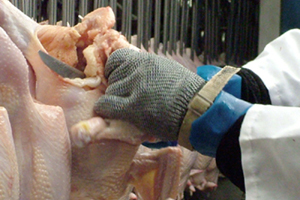US poultry groups scorn at safety claims

The US Poultry & Egg Association and National Chicken Council have taken exception to the recent OSHA citation against US poultry producer, Wayne Farms, for alleged safety violations at its Jack, Ala., plant involving musculoskeletal disorders and other workplace hazards.
OSHA’s investigation into Wayne Farms was rooted in a complaint filed by the Southern Poverty Law Center, an activist group with a long history of animosity toward the poultry industry, the poultry groups claim. “OSHA’s accusations of wrongdoing lack evidence and are simply unfounded. OSHA incorrectly portrays an undeserved negative image of the entire poultry industry despite its outstanding record of improvement in employee health and safety, particularly over the past three decades,” the groups explained in a statement.
“The poultry industry finds it ironic that OSHA, in effect ,is attacking the very same safety guidelines that it developed in cooperation with the poultry industry many years ago. In fact, this past summer OSHA and USDA issued a joint communication supporting “effective efforts by the poultry industry to protect the safety and health of employees.””
The US Bureau of Labor Statistics (BLS) reveals that poultry processing plants have reduced the rate of workplace illness, including musculoskeletal injuries such as carpal tunnel syndrome, by 62% in the past decade. BLS data further indicate that “Total Recordable Injury and Illness” in poultry plants has dropped from 22.7% of employees in 1994, down to just 4.5% in 2013.
In its recent citation, OSHA references an ambiguous section of federal law enacted in 1970. Commonly known as the General Duty Clause, it states that employers have a duty to provide a safe workplace.
The poultry industry believe that imposing the General Duty Clause should require more than simple observation of job tasks. There should also be specific evidence of hazards that are not being addressed, evidence that is lacking in OSHA’s citation against Wayne Farms.
After reviewing five years of injury and illness records in this case, OSHA identified only a handful of recordkeeping incidents, most of which involved the employer’s provision of exercise-strengthening programs for employees experiencing minor discomfort. Because the employer did not record these proactive measures to head off potential injury, OSHA misconstrued this as proof of underreporting.
Historically, as OSHA is aware, these proactive measures have not been recorded as injuries.
The poultry industry believes that it properly addresses OSHA’s recordkeeping standard and that OSHA has inexplicably changed its interpretation of the rules by deciding to now classify proactive job conditioning and minor soreness as a recordable injury or illness.
While the poultry industry respects the government’s oversight role in the joint effort to protect employees, the industry’s workplace advancements and future success are in danger of being hampered by unclear rules and arbitrary actions like those demonstrated by OSHA.
Source: US Poultry













